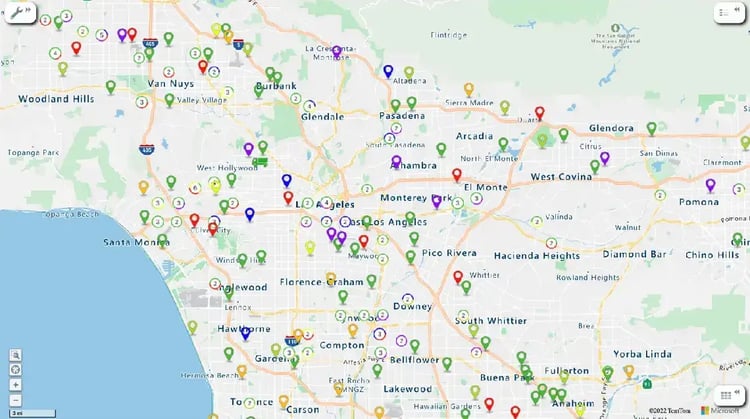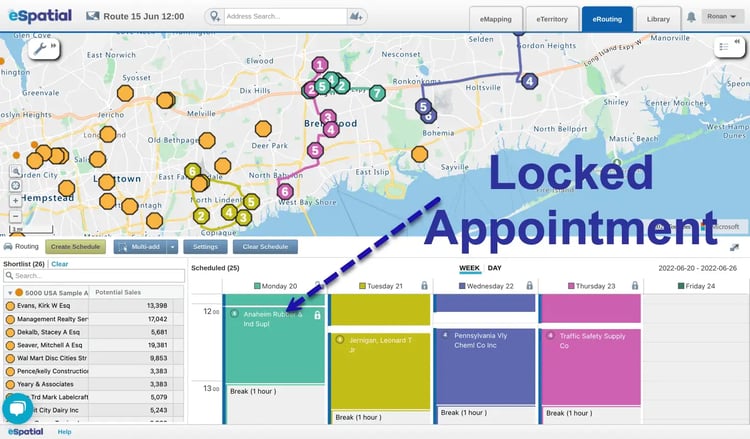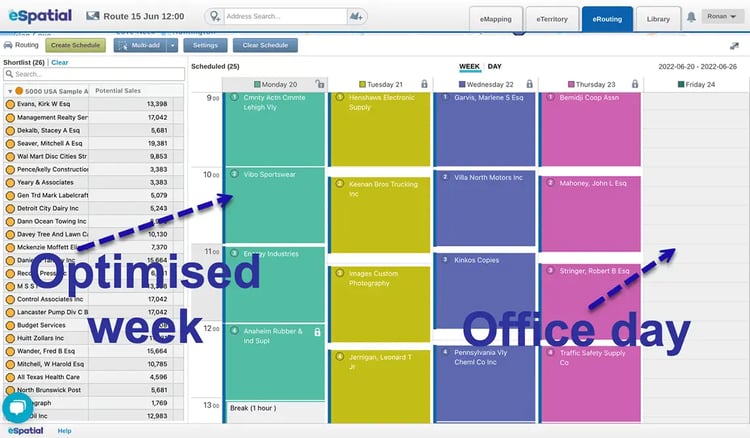What is sales route planning?
Sales route planning, or sales route optimization, is the process of organizing traveling to multiple stops in the shortest amount of time for salespeople. When this is done with a specialized route planner, the process becomes quite simple.
Why is sales route planning so important?
For salespeople, the time spent selling to prospects and customers is directly linked to quota achievement. According to a study done for the Forbes article "Why Sales Reps Spend So Little Time Selling", only 35% of a sales rep's time is spent selling to customers. Every minute regained through sales route planning, and optimization is time you can spend with customers. That leads to more revenue and productivity.
What are the key benefits of sales route planning?
- More time spent with "high-profit" customers (or Sweet Spot Clients)
- Less windshield time (or drivetime)
- More selling time
- Higher productivity and utilization
8 Best practices for route planning and optimization
1. Understand your customer locations
Your starting point is a deep knowledge of your sales territory and geography. Knowing your customers, prospects, and competitor locations is critical. Seeing those locations is transformational.
Your sales data will come alive as you uncover patterns like competitor clusters or customer hotspots. You will also see whitespaces or areas with untapped sales potential.

2. Align with your sales strategy and prioritize calls
Sales strategy execution is always a priority, but often behaviors misalign with the objectives. For example, your strategy is to sell premium security systems to households with a minimum income of $200,000. But analysis of sales rep calls shows that they are calling on households with average incomes below $100,000. It is a common challenge.
So, be clear on your Sweet Spot Client first before you proceed.
Think of your Sweet Spot Client as a customer with the highest profitable sales potential. Ask these questions
- Which industry and or group of organizations should you prioritize?
- What size are they? (revenue, employees, #patients, # PCs)
- What personas own the benefits?
- What will be their key drivers to enable them to say yes?
3. Build routes around critical and pre-scheduled meetings
As you enter the route design phase, focus initially on your highest-priority meetings. Add those to the schedule first. You'll want to optimize your routes with those "locked-in" meetings.
Next, add your pre-scheduled meetings. Experience shows that pre-booked appointments generate higher close rates.

4. Review your availability and workload
Now think about your availability. How many non-sales meetings do you need to attend? How many hours will you need to set aside for call planning, administration, emails, and calls?
Assuming you work a 32-hour week, subtract the non-selling time each day to estimate your available selling time.
5. Review and adapt to your customer's availability
Once you have reviewed your availability, you can move on to your customers. Are there customers who have visiting time windows? If so, add these first to your schedule. And add calls you have already "locked in."
Your route optimization software will take account of your "locked-in" times and customer availability, then generate your optimized schedule.
6. Plan your week first
Focus on your upcoming week to maximize your immediate potential and plan your month. It rarely goes exactly to plan, but if you have your month mapped out, you will be much more successful. And you'll feel more relaxed knowing you are on top of your schedule.
7. Optimize your selling day
Now focus on your selling day. Remember the foundational work you have done to make your day a success:
- You know your customer locations
- You are clear on the sales strategy
- You have prioritized your sales calls on sales potential
- You have "locked in" important sales calls
- You have accounted for your "non-selling" time
- You have planned out the week in advance
You are ready to optimize your day.

8. Be flexible with your day
You know how "best-laid plans" get messed up. Customers cancel appointments. Accidents happen on the roads resulting in delays. Sometimes you are running ahead of schedule and have free time to spend prospecting.
So, always have your route optimization tool at the ready and a backup call list. Your backup list is your go-to when you hit a challenge. You can easily re-optimize your day to include a new stop. Or to rearrange the order of your stops to accommodate a customer.
 by
by 
